
|
Now it is 6.2 mag (Nov. 11, Marco Goiato). It will fade out rapidly after this. In the Northern Hemisphere, it will be getting lower gradually after this, and it will be unobservable in January. In the Southern Hemisphere, it will be getting higher gradually.
Date(TT) R.A. (2000) Decl. Delta r Elong. m1 Best Time(A, h)
Nov. 11 18 40.83 18 37.5 0.193 0.924 64 7.1 18:24 ( 74, 47)
Nov. 18 20 59.69 -21 52.2 0.319 0.963 76 8.4 18:20 ( 17, 30)
|
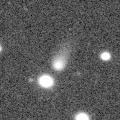
|
It is expected to brighten up to 7 mag in early 2024. Now it is 12.3 mag (Sept. 16, Jose G. S. Aguiar). Brightening gradually. It stays extremely low in the Northern Hemisphere. But it will become high in winter. It locates somewhat low in the Southern Hemisphere. But it will become high in winter. The brightness evolution slowed down since May.
Date(TT) R.A. (2000) Decl. Delta r Elong. m1 Best Time(A, h)
Nov. 11 11 55.55 -38 25.8 2.464 1.910 45 9.8 5:03 (321, 1)
Nov. 18 12 17.54 -39 8.4 2.384 1.842 46 9.5 5:09 (323, 2)
|

|
It is expected to brighten up to 7 mag, and it will be observable in good condition in winter. Now it is 10.5 mag (Nov. 11, Marco Goiato). Brightening gradually. In the Northern Hemisphere, it stays observable in good condition.
Date(TT) R.A. (2000) Decl. Delta r Elong. m1 Best Time(A, h)
Nov. 11 8 24.94 20 55.7 0.730 1.369 104 10.5 5:03 (357, 76)
Nov. 18 8 52.20 20 12.9 0.682 1.340 105 9.6 5:06 ( 0, 75)
|
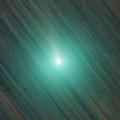
|
It approached to Earth down to 0.38 a.u., and brightened up to 8.0 mag in autumn (Sept. 29, Virgilio Gonano). Now it is 9.9 mag (Nov. 10, Osamu Miyazaki). It will fade out rapidly after this. It stays observable in good condition.
Date(TT) R.A. (2000) Decl. Delta r Elong. m1 Best Time(A, h)
Nov. 11 8 47.10 -0 6.9 0.504 1.139 93 9.6 5:03 (349, 54)
Nov. 18 8 56.04 -3 42.3 0.528 1.176 96 10.0 5:09 (359, 51)
|
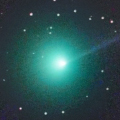
|
It brightened up to 8.1 mag in autumn (Oct. 10, Juan Jose Gonzalez). Fading rapidly. It will be fainter than 18 mag in January. It will never be observable after this.
Date(TT) R.A. (2000) Decl. Delta r Elong. m1 Best Time(A, h)
Nov. 11 15 27.71 -23 17.6 1.557 0.596 8 9.7 18:24 ( 72,-16)
Nov. 18 16 11.96 -25 54.8 1.664 0.725 11 11.2 18:20 ( 67,-13)
|

|
Now it is 10.3 mag (Nov. 3, Hiroshi Abe). Fading gradually. In the Northern Hemisphere, it will be unobservable in January. In the Southern Hemisphere, it stays observable in good condition.
Date(TT) R.A. (2000) Decl. Delta r Elong. m1 Best Time(A, h)
Nov. 11 23 50.08 -42 55.1 2.633 3.050 105 10.9 20:29 ( 0, 12)
Nov. 18 23 39.37 -43 6.1 2.800 3.101 98 11.2 19:51 ( 0, 12)
|
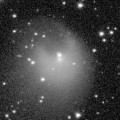
|
It returns for the first time in 70 years. It will brighten up to 4.5 mag in 2024 spring. It suddenly brightened in outburst by 5 mag up to 11.5 mag on July 20 (E. Tamas, Francois Kugel). It brightened again in another outburst up to 11.7 mag on Oct. 5 (Richard Miles). Another outburst occured on Oct. 31 (Francois Kugel). Now it is 10.6 mag (Nov. 6, Carlos Labordena). It will brighten rapidly after this. In the Northern Hemisphere, it will be getting lower gradually. In the Southern Hemisphere, it is not observable now.
Date(TT) R.A. (2000) Decl. Delta r Elong. m1 Best Time(A, h)
Nov. 11 17 54.35 40 32.4 2.797 2.632 70 11.2 18:24 (115, 45)
Nov. 18 18 4.34 39 46.3 2.732 2.548 68 11.2 18:20 (115, 42)
|

|
It brightened up to 8 mag from 2022 summer to 2023 spring. Now it is 11.7 mag (Nov. 9, Osamu Miyazaki). Fading slowly. It stays observable in good condition.
Date(TT) R.A. (2000) Decl. Delta r Elong. m1 Best Time(A, h)
Nov. 11 6 30.82 -7 48.2 3.539 4.158 122 12.2 3:13 ( 0, 47)
Nov. 18 6 24.48 -7 28.6 3.521 4.221 129 12.3 2:39 ( 0, 47)
|

|
It brightened up to 7.8 mag in late July (July 20, Thomas Lehmann). Now it is 12.9 mag (Oct. 3, Chris Wyatt). Fading slowly. Now it is not observable. It will appear in December.
Date(TT) R.A. (2000) Decl. Delta r Elong. m1 Best Time(A, h)
Nov. 11 15 6.16 -10 15.9 3.020 2.041 6 13.0 18:24 ( 87,-14)
Nov. 18 15 8.55 -9 46.9 3.067 2.104 10 13.2 5:09 (276, -9)
|
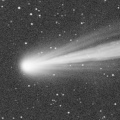
|
It approached to Sun down to 0.23 a.u. and brightened up to 2.5 mag in mid September (Sept. 18, Juan Jose Gonzalez). Now it is 12.5 mag (Nov. 3, Sam Deen). Fading rapidly. It will be fainter than 18 mag in January. In the Northern Hemisphere, it is not observable now, but it will be observable soon. In the Southern Hemisphere, it will be getting higher gradually.
Date(TT) R.A. (2000) Decl. Delta r Elong. m1 Best Time(A, h)
Nov. 11 12 54.22 -35 21.9 2.094 1.384 33 13.0 5:03 (311, -5)
Nov. 18 12 52.73 -37 55.6 2.145 1.513 39 13.7 5:09 (317, -2)
|
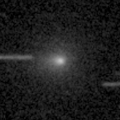
|
It brightened up to 12.6 mag in autumn (Oct. 3, Chris Wyatt). Now it is 13.7 mag (Nov. 2, Ken-ichi Kadota). It will fade out rapidly after this. It will be fainter than 18 mag in March. In the Northern Hemisphere, it stays observable in good condition. It locates somewhat low in the Southern Hemisphere.
Date(TT) R.A. (2000) Decl. Delta r Elong. m1 Best Time(A, h)
Nov. 11 19 12.48 -3 49.5 1.200 1.153 62 13.0 18:24 ( 50, 38)
Nov. 18 19 48.51 -2 58.0 1.220 1.201 64 13.2 18:20 ( 48, 40)
|

|
Now it is 14.3 mag (Oct. 16, Martin Masek). It stays 14 mag for a while. It stays extremely low in the Northern Hemisphere. In the Southern Hemisphere, it stays observable in good condition.
Date(TT) R.A. (2000) Decl. Delta r Elong. m1 Best Time(A, h)
Nov. 11 10 44.95 -30 3.8 4.562 4.149 59 13.2 5:03 (328, 17)
Nov. 18 10 43.11 -31 45.1 4.498 4.179 65 13.2 5:09 (336, 18)
|
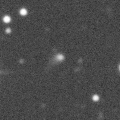
|
Now it is 14.2 mag (Oct. 19, Ken-ichi Kadota). Brightening slowly. It stays observable in good condition. It is expected to brighten up to 12 mag from 2024 to 2025.
Date(TT) R.A. (2000) Decl. Delta r Elong. m1 Best Time(A, h)
Nov. 11 9 42.64 5 59.9 4.589 4.561 82 13.7 5:03 (322, 55)
Nov. 18 9 41.33 6 32.6 4.422 4.526 89 13.6 5:09 (337, 59)
|

|
Now it is 12.4 mag (Oct. 17, Toshiyuki Takahashi). In the Northern Hemisphere, it stays observable in good condition.
Date(TT) R.A. (2000) Decl. Delta r Elong. m1 Best Time(A, h)
Nov. 11 8 43.22 20 35.8 5.898 6.152 100 13.8 5:03 (340, 75)
Nov. 18 8 43.84 20 31.5 5.790 6.154 107 13.7 4:58 ( 0, 75)
|

|
It brightened up to 8.3 mag in 2021-2022 winter (Jan. 6, 2022, Toshiyuki Takahashi). Now it is 13.2 mag (July 14, Chris Wyatt). It stays 14 mag for a while. It stays extremely low in the Northern Hemisphere. In the Southern Hemisphere, it stays observable in good condition.
Date(TT) R.A. (2000) Decl. Delta r Elong. m1 Best Time(A, h)
Nov. 11 11 14.82 -42 30.5 7.231 6.700 54 14.0 5:03 (330, 3)
Nov. 18 11 18.30 -43 30.4 7.221 6.745 57 14.0 5:09 (335, 5)
|
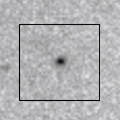
|
It is expected to brighten up to 8.5 mag from January to February. Now it is 15.5 mag (Nov. 3, Martin Masek). Brightening rapidly. It stays observable in good condition. It is fainter than this ephemeris recently.
Date(TT) R.A. (2000) Decl. Delta r Elong. m1 Best Time(A, h)
Nov. 11 2 55.93 19 29.0 0.650 1.640 177 14.4 23:35 ( 0, 75)
Nov. 18 2 52.62 18 36.3 0.618 1.602 170 14.0 23:04 ( 0, 74)
|

|
Now it is 14.8 mag (Oct. 28, ATLAS Chile). Fading slowly. In the Northern Hemisphere, it is not observable now. In the Southern Hemisphere, it stays observable in good condition. It was expected to brighten up to 10 mag from spring to summer. However, it was fainter than originally expected.
Date(TT) R.A. (2000) Decl. Delta r Elong. m1 Best Time(A, h)
Nov. 11 11 59.70 -81 14.3 3.833 3.562 66 14.3 5:03 (352,-30)
Nov. 18 11 50.34 -82 40.0 3.866 3.595 66 14.4 5:09 (354,-30)
|
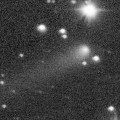
|
Now it is 14.7 mag (Nov. 1, Ken-ichi Kadota). Fading slowly. It will be getting lower gradually after this, and it will be unobservable in January in the Southern Hemisphere, or in February in the Northern Hemisphere.
Date(TT) R.A. (2000) Decl. Delta r Elong. m1 Best Time(A, h)
Nov. 11 22 59.41 3 24.7 3.017 3.602 118 14.5 19:38 ( 0, 59)
Nov. 18 22 51.11 3 11.2 3.172 3.631 110 14.6 19:03 ( 0, 58)
|
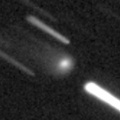
|
Now it is 14.9 mag (Sept. 18, Ken-ichi Kadota). Brightening slowly. Now it is not observable. It will appear in December. It is expected to brighten up to 12.5 mag in 2024 spring. At the high light, it will be observable in excellent condition in the Southern Hemisphere, but it will be low in the Northern Hemisphere.
Date(TT) R.A. (2000) Decl. Delta r Elong. m1 Best Time(A, h)
Nov. 11 15 17.24 -8 32.8 3.950 2.978 9 14.5 18:24 ( 87,-10)
Nov. 18 15 19.58 -9 47.7 3.918 2.948 9 14.5 5:09 (275,-11)
|

|
The ATLAS search program detected its cometary activity in April. It continues to be brightening even after the perihelion passage. Now it is 14.1 mag (Oct. 29, Ken-ichi Kadota). It will fade out rapidly after this. It will be fainter than 18 mag in February. It stays observable in good condition.
Date(TT) R.A. (2000) Decl. Delta r Elong. m1 Best Time(A, h)
Nov. 11 23 32.23 -22 5.4 2.774 3.321 115 14.7 20:12 ( 0, 33)
Nov. 18 23 34.15 -20 59.8 2.897 3.360 109 14.9 19:46 ( 0, 34)
|

|
Now it is 15.2 mag (July 22, ATLAS Chile). It stays 14 mag for a while. It stays extremely low in the Northern Hemisphere. In the Southern Hemisphere, it stays observable in good condition.
Date(TT) R.A. (2000) Decl. Delta r Elong. m1 Best Time(A, h)
Nov. 11 11 33.81 -32 44.0 6.091 5.495 49 14.8 5:03 (321, 9)
Nov. 18 11 39.61 -33 21.8 6.009 5.473 53 14.8 5:09 (326, 11)
|
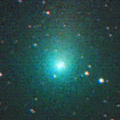
|
It brightened up to 9.5 mag from last winter to early spring (Jan. 30, Katsumi Yoshimoto). Now it is 14.7 mag (Nov. 1, W. Pei). It will fade out rapidly after this. It will be fainter than 18 mag in March. It will be getting lower gradually after this, and it will be unobservable in February.
Date(TT) R.A. (2000) Decl. Delta r Elong. m1 Best Time(A, h)
Nov. 11 22 33.22 -9 46.9 3.175 3.611 108 14.9 19:13 ( 0, 45)
Nov. 18 22 32.65 -10 53.6 3.361 3.675 100 15.1 18:45 ( 0, 44)
|
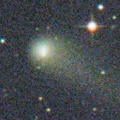
|
It brightened up to 11.1 mag in early 2022 (Mar. 31, 2022, F. Kugel, J.-G. Bosch, J. Nicolas). Now it is 14.3 mag (Nov. 3, Hiroshi Abe). It stays 15 mag for a while. It locates somewhat low in the Northern Hemisphere. But it will become high in winter. In the Southern Hemisphere, it is not observable now, but it will appear in February.
Date(TT) R.A. (2000) Decl. Delta r Elong. m1 Best Time(A, h)
Nov. 11 16 18.14 15 43.2 6.710 5.959 37 14.9 18:24 ( 98, 16)
Nov. 18 16 24.15 15 40.4 6.756 5.997 37 15.0 18:20 (101, 12)
|

|
Now it is 15.1 mag (Nov. 3, Hiroshi Abe). It stays 15 mag for a while. It stays observable in good condition.
Date(TT) R.A. (2000) Decl. Delta r Elong. m1 Best Time(A, h)
Nov. 11 3 12.14 16 14.7 1.473 2.463 177 15.0 23:50 ( 0, 71)
Nov. 18 3 5.81 16 25.3 1.446 2.431 173 14.9 23:17 ( 0, 72)
|

|
It will approach to Sun down to 0.4 a.u. in late September in 2024, and it is expected to brighten up to 0 mag. Now it is 15.3 mag (Sept. 10, A. Ivanov et al.). It will brighten rapidly after this. Now it is not observable. It will appear soon in the Northern Hemisphere, or in December in the Southern Hemisphere. At the high light, in the Northern Hemisphere, it will be observable in good condition after the perihelion passage. In the Southern Hemisphere, it will be observable in the low sky before and after the perihelion passage.
Date(TT) R.A. (2000) Decl. Delta r Elong. m1 Best Time(A, h)
Nov. 11 14 34.46 -4 43.4 5.760 4.806 14 15.1 5:03 (272, -6)
Nov. 18 14 38.30 -5 9.7 5.656 4.732 18 15.0 5:09 (277, 0)
|
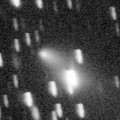
|
It brightened up to 13.6 mag in summer (July 16, Mitsunori Tsumura). Now it is 15.0 mag (Oct. 23, Ken-ichi Kadota). It will fade out rapidly after this. It will be fainter than 18 mag in February. In the Northern Hemisphere, it stays observable in good condition. In the Southern Hemisphere, it will never be observable after this.
Date(TT) R.A. (2000) Decl. Delta r Elong. m1 Best Time(A, h)
Nov. 11 23 36.09 69 55.4 1.531 2.188 118 15.2 20:14 (180, 55)
Nov. 18 23 23.19 69 2.1 1.594 2.232 117 15.4 19:34 (180, 56)
|
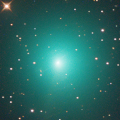
|
It brightened up to 8.4 mag in late July (July 22, Thomas Lehmann). Now it is 16.9 mag (Oct. 29, Ken-ichi Kadota). Fading rapidly. It will be fainter than 18 mag in January. It stays observable in good condition.
Date(TT) R.A. (2000) Decl. Delta r Elong. m1 Best Time(A, h)
Nov. 11 23 1.54 -25 22.0 1.716 2.226 107 15.4 19:41 ( 0, 30)
Nov. 18 23 8.97 -25 4.4 1.879 2.306 102 15.8 19:21 ( 0, 30)
|

|
Now it is 16.3 mag (Nov. 3, ATLAS Chile). Fading slowly. In the Northern Hemisphere, it will be getting higher gradually. In the Southern Hemisphere, it stays observable in good condition.
Date(TT) R.A. (2000) Decl. Delta r Elong. m1 Best Time(A, h)
Nov. 11 0 50.76 -44 24.4 1.213 1.826 111 15.5 21:29 ( 0, 11)
Nov. 18 0 43.39 -39 51.3 1.225 1.812 109 15.4 20:55 ( 0, 16)
|

|
David Rankin detected its cometary activity in June. Now it is 15.5 mag (Nov. 3, Hiroshi Abe). Fading slowly. In the Northern Hemisphere, it stays observable in good condition. In the Southern Hemisphere, it will be getting lower gradually.
Date(TT) R.A. (2000) Decl. Delta r Elong. m1 Best Time(A, h)
Nov. 11 22 23.86 -3 18.9 1.627 2.155 108 15.6 19:04 ( 0, 52)
Nov. 18 22 31.48 -2 47.2 1.688 2.145 103 15.6 18:44 ( 0, 52)
|

|
It has not been observed yet in this apparition. It was expected to brighten rapidly up to 15 mag in summer. But actually, it is not detected, fainter than 18 mag (Oct. 14, Martin Masek). Fading slowly. It will be unobservable in January in the Southern Hemisphere, or in February in the Northern Hemisphere.
Date(TT) R.A. (2000) Decl. Delta r Elong. m1 Best Time(A, h)
Nov. 11 19 27.79 -21 0.5 2.233 1.980 62 15.7 18:24 ( 35, 26)
Nov. 18 19 43.57 -19 58.2 2.296 1.981 59 15.7 18:20 ( 38, 25)
|

|
Now it is 14.3 mag (July 7, Thomas Lehmann). It stays 16 mag for a while. In the Northern Hemisphere, it is not observable now, but it will appear in January. It locates somewhat low in the Southern Hemisphere. But it will become high in winter.
Date(TT) R.A. (2000) Decl. Delta r Elong. m1 Best Time(A, h)
Nov. 11 14 25.22 -49 6.4 3.816 3.031 32 15.8 5:03 (313,-26)
Nov. 18 14 39.73 -49 0.6 3.885 3.088 31 15.9 5:09 (315,-24)
|

|
Fading rapidly. It will be fainter than 18 mag in January. In the Northern Hemisphere, it will be getting higher gradually. It stays extremely low in the Southern Hemisphere.
Date(TT) R.A. (2000) Decl. Delta r Elong. m1 Best Time(A, h)
Nov. 11 17 46.44 -4 25.1 0.774 0.666 42 15.9 18:24 ( 67, 23)
Nov. 18 18 52.35 -0 29.0 0.794 0.811 52 16.0 18:20 ( 63, 33)
|

|
It brightened up to 11.8 mag in summer (June 17, Osamu Miyazaki). Now it is 15.5 mag (Oct. 29, Ken-ichi Kadota). It will fade out rapidly after this. It will be fainter than 18 mag in January. In the Northern Hemisphere, it stays observable in good condition. In the Southern Hemisphere, it will be getting lower gradually after this, and it will be unobservable in January.
Date(TT) R.A. (2000) Decl. Delta r Elong. m1 Best Time(A, h)
Nov. 11 20 41.37 -3 4.7 2.314 2.422 84 15.9 18:24 ( 24, 49)
Nov. 18 20 51.88 -2 52.9 2.423 2.451 79 16.2 18:20 ( 29, 48)
|
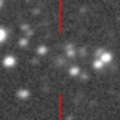
|
Now it is 16.8 mag (Oct. 16, ATLAS South Africa). Fading slowly. It will be unobservable in January. But it will be observable again in March in the Southern Hemisphere.
Date(TT) R.A. (2000) Decl. Delta r Elong. m1 Best Time(A, h)
Nov. 11 19 22.64 -34 30.8 3.357 2.989 60 16.0 18:24 ( 29, 13)
Nov. 18 19 34.44 -34 21.7 3.444 3.001 55 16.1 18:20 ( 32, 12)
|
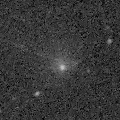
|
Very large comet. It is expected to brighten up to 13 mag in 2031. Now it is 15.9 mag (Oct. 15, Thomas Lehmann). It stays 16 mag for a while. In the Northern Hemisphere, it is not observable now. In the Southern Hemisphere, it stays observable in good condition. In the Northern Hemisphere, it is not observable until 2030.
Date(TT) R.A. (2000) Decl. Delta r Elong. m1 Best Time(A, h)
Nov. 11 3 14.63 -65 56.2 16.883 17.029 96 16.1 23:52 ( 0,-11)
Nov. 18 3 11.45 -66 1.6 16.892 17.004 94 16.1 23:22 ( 0,-11)
|

|
It approached to Earth down to 0.29 a.u. in early February, and it brightened up to 4.5 mag (Feb. 1, Juan Jose Gonzalez). Now it is 16.5 mag (Nov. 3, ATLAS Chile). Fading slowly. It will be fainter than 18 mag in March. In the Northern Hemisphere, it will never be observable after this. In the Southern Hemisphere, it stays observable in good condition.
Date(TT) R.A. (2000) Decl. Delta r Elong. m1 Best Time(A, h)
Nov. 11 5 34.70 -60 33.6 3.898 4.127 96 16.1 2:17 ( 0, -5)
Nov. 18 5 17.50 -61 42.4 3.970 4.199 96 16.2 1:32 ( 0, -7)
|

|
Now it is 16.4 mag (Nov. 2, G. Duszanowicz, J. Camarasa). It stays 16 mag for a while. In the Northern Hemisphere, it will be getting lower gradually after this, and it will be unobservable in March. In the Southern Hemisphere, it stays observable in good condition. The brightness evolution is slower than originally expected.
Date(TT) R.A. (2000) Decl. Delta r Elong. m1 Best Time(A, h)
Nov. 11 2 38.03 -21 33.7 2.916 3.736 140 16.2 23:16 ( 0, 33)
Nov. 18 2 28.95 -23 27.9 2.926 3.691 134 16.2 22:39 ( 0, 31)
|
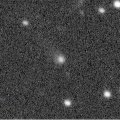
|
Now it is 16.7 mag (Oct. 18, ATLAS South Africa). It stays 16 mag for a while. In the Northern Hemisphere, it will be unobservable soon. In the Southern Hemisphere, it stays observable in good condition.
Date(TT) R.A. (2000) Decl. Delta r Elong. m1 Best Time(A, h)
Nov. 11 9 41.72 -49 36.9 3.932 3.723 70 16.2 5:03 (347, 3)
Nov. 18 9 40.28 -52 29.9 3.887 3.730 73 16.2 5:09 (353, 2)
|

|
Now it is 16.5 mag (Nov. 7, Ken-ichi Kadota). Fading slowly. It will be getting lower gradually after this, and it will be unobservable in January. But it will be observable again in February in the Northern Hemisphere.
Date(TT) R.A. (2000) Decl. Delta r Elong. m1 Best Time(A, h)
Nov. 11 2 8.33 -20 37.7 0.564 1.468 139 16.4 22:41 ( 0, 33)
Nov. 18 0 48.23 -31 22.9 0.617 1.377 116 16.3 20:54 ( 0, 23)
|

|
Now it is 15.2 mag (Oct. 17, Ken-ichi Kadota). Fading slowly. In the Northern Hemisphere, it stays observable in good condition. In the Southern Hemisphere, it will be getting lower gradually after this, and it will be unobservable in March.
Date(TT) R.A. (2000) Decl. Delta r Elong. m1 Best Time(A, h)
Nov. 11 0 4.82 -8 22.7 3.066 3.772 129 16.4 20:44 ( 0, 47)
Nov. 18 0 3.82 -8 6.9 3.167 3.787 122 16.5 20:16 ( 0, 47)
|
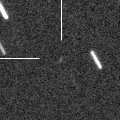
|
It is expected to brighten up to 16 mag in winter. Now it is 18.7 mag (Oct. 27, F. Kugel, J. Nicolas). It stays 17 mag for a while. In the Northern Hemisphere, it stays observable in good condition. In the Southern Hemisphere, it will be getting higher gradually. It is fainter than this ephemeris recently.
Date(TT) R.A. (2000) Decl. Delta r Elong. m1 Best Time(A, h)
Nov. 11 11 54.97 6 35.4 2.523 2.066 51 16.7 5:03 (287, 33)
Nov. 18 11 54.92 3 53.6 2.422 2.072 57 16.6 5:09 (296, 38)
|

|
It brightened up to 14.1 mag in 2022 spring (Mar. 22, 2022, Chris Wyatt). Now it is 16.1 mag (Oct. 26, ATLAS Chile). Fading slowly. In the Northern Hemisphere, it stays observable in good condition. In the Southern Hemisphere, it will be getting lower gradually after this, and it will be unobservable in March.
Date(TT) R.A. (2000) Decl. Delta r Elong. m1 Best Time(A, h)
Nov. 11 1 49.04 -2 8.4 4.693 5.597 153 16.6 22:27 ( 0, 53)
Nov. 18 1 42.79 -1 53.4 4.796 5.645 146 16.7 21:54 ( 0, 53)
|

|
Now it is 16.4 mag (Nov. 4, ATLAS Chile). It stays 17 mag for a while. It stays observable in good condition.
Date(TT) R.A. (2000) Decl. Delta r Elong. m1 Best Time(A, h)
Nov. 11 4 52.91 -12 41.0 6.499 7.280 139 16.7 1:35 ( 0, 42)
Nov. 18 4 50.61 -12 47.0 6.438 7.249 142 16.6 1:05 ( 0, 42)
|
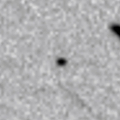
|
It will approach to Earth down to 0.2 a.u. from February to March, and it is expected to brighten up to 13 mag. Now it is 18.2 mag (Nov. 2, Ken-ichi Kadota). It will brighten rapidly after this. It stays observable in good condition.
Date(TT) R.A. (2000) Decl. Delta r Elong. m1 Best Time(A, h)
Nov. 11 23 58.57 -4 33.9 0.667 1.507 129 16.9 20:37 ( 0, 50)
Nov. 18 23 54.06 -6 38.8 0.653 1.437 120 16.6 20:06 ( 0, 48)
|
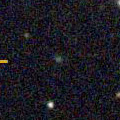
|
Now it is 16.8 mag (Nov. 4, ATLAS-HKO, Haleakala). It stays 17 mag for a while. In the Northern Hemisphere, it stays observable in good condition. It stays extremely low in the Southern Hemisphere.
Date(TT) R.A. (2000) Decl. Delta r Elong. m1 Best Time(A, h)
Nov. 11 4 57.13 41 25.5 5.859 6.698 145 16.7 1:40 (180, 84)
Nov. 18 4 54.63 41 35.6 5.812 6.696 151 16.7 1:10 (180, 83)
|
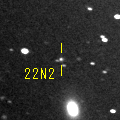
|
It is expected to brighten up to 11.5 mag in 2025 autumn, and it will be observable in good condition. Now it is 16.9 mag (Oct. 30, ATLAS Chile). It stays 16 mag for a while. It will be getting lower gradually after this, and it will be unobservable in January. But it will be observable again in March in the Southern Hemisphere.
Date(TT) R.A. (2000) Decl. Delta r Elong. m1 Best Time(A, h)
Nov. 11 20 38.23 -18 52.7 6.589 6.474 79 16.8 18:24 ( 19, 34)
Nov. 18 20 40.85 -18 39.8 6.656 6.431 72 16.7 18:20 ( 25, 33)
|

|
Very far object. Now it is 16.8 mag (Oct. 28, Jean-Claude Merlin). It stays 17 mag for a while. In the Northern Hemisphere, it is not observable now. In the Southern Hemisphere, it stays observable in good condition.
Date(TT) R.A. (2000) Decl. Delta r Elong. m1 Best Time(A, h)
Nov. 11 4 20.70 -77 22.2 10.357 10.313 84 16.8 1:02 ( 0,-22)
Nov. 18 4 3.64 -77 26.0 10.379 10.313 83 16.8 0:17 ( 0,-22)
|
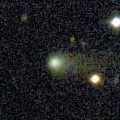
|
It brightened up to 13.9 mag in early 2023 (Jan. 21, Hidenori Nohara). Now it is 16.3 mag (June 17, Ken-ichi Kadota). It stays 17 mag for a while. In the Northern Hemisphere, it will be getting higher gradually. In the Southern Hemisphere, it is not observable now, but it will appear in December.
Date(TT) R.A. (2000) Decl. Delta r Elong. m1 Best Time(A, h)
Nov. 11 13 31.28 8 16.4 4.994 4.209 33 16.8 5:03 (270, 15)
Nov. 18 13 39.05 7 48.3 4.976 4.247 38 16.8 5:09 (275, 20)
|

|
Now it is 17.4 mag (Oct. 17, D. Buczynski). It stays 17 mag for a while. In the Northern Hemisphere, it stays observable in good condition. It locates somewhat low in the Southern Hemisphere. But it will become high in autumn.
Date(TT) R.A. (2000) Decl. Delta r Elong. m1 Best Time(A, h)
Nov. 11 5 4.47 38 5.3 4.384 5.235 146 17.0 1:47 (180, 87)
Nov. 18 5 1.49 37 42.6 4.315 5.214 152 16.9 1:17 (180, 87)
|
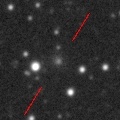
|
Now it is 16.4 mag (Oct. 15, Yukihiro Sugiyama). It stays 17 mag for a while. It will be unobservable in February in the Northern Hemisphere, or in December in the Southern Hemisphere.
Date(TT) R.A. (2000) Decl. Delta r Elong. m1 Best Time(A, h)
Nov. 11 19 12.32 -12 23.7 2.769 2.437 60 17.0 18:24 ( 44, 31)
Nov. 18 19 24.43 -12 10.9 2.828 2.426 56 17.0 18:20 ( 47, 29)
|

|
Now it is 16.4 mag (Oct. 25, ATLAS Chile). Fading slowly. It will be fainter than 18 mag in January. It stays observable in good condition.
Date(TT) R.A. (2000) Decl. Delta r Elong. m1 Best Time(A, h)
Nov. 11 3 42.65 4 36.1 2.166 3.130 163 17.0 0:26 ( 0, 60)
Nov. 18 3 37.82 4 19.4 2.177 3.143 165 17.1 23:49 ( 0, 59)
|
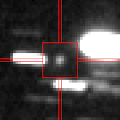
|
It is expected to brighten up to 12.5 mag in 2024 summer. Now it is 17.3 mag (July 28, ATLAS South Africa). Brightening slowly. In the Northern Hemisphere, it is not observable now. In the Southern Hemisphere, it will be getting higher gradually. Around the high light, it is observable in good condition in the Southern Hemisphere, but it locates very low in the Northern Hemisphere.
Date(TT) R.A. (2000) Decl. Delta r Elong. m1 Best Time(A, h)
Nov. 11 12 53.50 -50 23.7 5.204 4.517 41 17.1 5:03 (322,-14)
Nov. 18 13 3.99 -51 29.3 5.128 4.461 43 17.0 5:09 (326,-12)
|

|
Now it is 16.9 mag (Oct. 30, ATLAS South Africa). Fading slowly. It will be fainter than 18 mag in January. It will be getting lower gradually. It was very faint as 21.5 mag in 2021. It seems to be bright temporarily in outburst.
Date(TT) R.A. (2000) Decl. Delta r Elong. m1 Best Time(A, h)
Nov. 11 21 14.11 -11 31.4 4.551 4.647 89 17.2 18:24 ( 10, 43)
Nov. 18 21 17.45 -11 17.3 4.674 4.662 83 17.3 18:20 ( 17, 42)
|
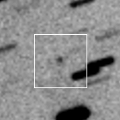
|
Now it is 17.2 mag (Oct. 23, ATLAS-HKO, Haleakala). It stays 17 mag for a while. In the Northern Hemisphere, it stays observable in good condition. In the Southern Hemisphere, it will be unobservable in December.
Date(TT) R.A. (2000) Decl. Delta r Elong. m1 Best Time(A, h)
Nov. 11 23 21.60 53 5.3 3.717 4.353 124 17.2 20:00 (180, 72)
Nov. 18 23 8.73 51 17.3 3.759 4.338 119 17.2 19:20 (180, 74)
|

|
Now it is 17.2 mag (Oct. 26, ATLAS South Africa). It stays 17 mag for a while. It stays extremely low in the Northern Hemisphere. In the Southern Hemisphere, it stays observable in good condition.
Date(TT) R.A. (2000) Decl. Delta r Elong. m1 Best Time(A, h)
Nov. 11 5 11.36 -40 30.0 7.396 7.866 114 17.3 1:53 ( 0, 15)
Nov. 18 5 9.13 -40 47.6 7.358 7.841 115 17.2 1:24 ( 0, 14)
|
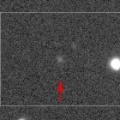
|
It will be observable at 15-16 mag from 2024 to 2025. Now it is 17.9 mag (Apr. 25, A. Diepvens). Brightening slowly. In the Northern Hemisphere, it will be getting higher gradually. In the Southern Hemisphere, it is not observable now, but it will be observable soon.
Date(TT) R.A. (2000) Decl. Delta r Elong. m1 Best Time(A, h)
Nov. 11 12 22.51 5 37.8 4.506 3.877 45 17.4 5:03 (283, 27)
Nov. 18 12 29.36 4 58.9 4.412 3.862 50 17.3 5:09 (289, 32)
|

|
It returned for the first time in 68 years. It will brighten up to 7.5 mag in 2024 summer. Now it is 18.4 mag (Nov. 4, Catalina Sky Survey). It will brighten rapidly after this. It stays observable in good condition. At the high light, it locates low in the Northern Hemisphere, or it is not observable in the Southern Hemisphere.
Date(TT) R.A. (2000) Decl. Delta r Elong. m1 Best Time(A, h)
Nov. 11 4 1.93 -21 20.0 2.433 3.244 138 17.7 0:45 ( 0, 34)
Nov. 18 3 53.92 -21 22.5 2.359 3.174 139 17.4 0:09 ( 0, 34)
|
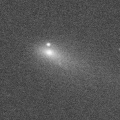
|
It brightened up to 12.8 mag in spring (Mar. 8, Taras Prystavski). Now it is 17.0 mag (Oct. 19, Ken-ichi Kadota). It will fade out rapidly after this. It will be fainter than 18 mag in December. It stays observable in good condition.
Date(TT) R.A. (2000) Decl. Delta r Elong. m1 Best Time(A, h)
Nov. 11 0 33.14 -5 44.8 2.057 2.859 136 17.4 21:12 ( 0, 49)
Nov. 18 0 31.10 -5 22.6 2.164 2.895 129 17.6 20:43 ( 0, 50)
|
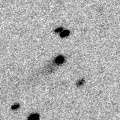
|
Now it is 17.0 mag (Apr. 11, Michael Jager). It stays 18 mag for a while. In the Northern Hemisphere, it stays observable in good condition. In the Southern Hemisphere, it is not observable now, but it will be observable soon.
Date(TT) R.A. (2000) Decl. Delta r Elong. m1 Best Time(A, h)
Nov. 11 12 31.80 12 33.4 9.890 9.251 47 17.6 5:03 (275, 29)
Nov. 18 12 32.59 12 39.6 9.807 9.263 54 17.6 5:09 (280, 36)
|

|
First return of a new periodic comet which brightened up to 10 mag in 2001. It is expected to brighten up to 12-13 mag from February to March in 2024. It will brighten rapidly after this. In the Northern Hemisphere, it will be getting higher gradually. In the Southern Hemisphere, it will be getting lower gradually after this, and it will be unobservable in January.
Date(TT) R.A. (2000) Decl. Delta r Elong. m1 Best Time(A, h)
Nov. 11 23 26.28 -36 16.8 1.455 1.975 106 17.8 20:05 ( 0, 19)
Nov. 18 23 17.52 -32 9.0 1.470 1.918 100 17.7 19:29 ( 0, 23)
|

|
The cometary activity was detected by Masayoshi Yoshimi on Sept. 15. Now it is 16.0 mag (Sept. 15, Masayoshi Yoshimi). It will fade out rapidly after this. It will be fainter than 18 mag soon. In the Northern Hemisphere, it stays observable in good condition. In the Southern Hemisphere, it will never be observable after this.
Date(TT) R.A. (2000) Decl. Delta r Elong. m1 Best Time(A, h)
Nov. 11 22 31.20 64 25.7 0.325 1.166 115 17.7 19:12 (180, 60)
Nov. 18 23 12.03 66 26.8 0.350 1.191 117 17.8 19:26 (180, 58)
|
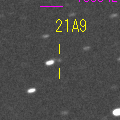
|
Now it is 18.9 mag (Sept. 25, W. Hasubick). It stays 18 mag for a while. It stays observable in good condition.
Date(TT) R.A. (2000) Decl. Delta r Elong. m1 Best Time(A, h)
Nov. 11 7 32.85 10 3.7 7.303 7.761 114 17.8 4:15 ( 0, 65)
Nov. 18 7 28.94 9 52.3 7.193 7.761 121 17.8 3:44 ( 0, 65)
|

|
Now it is 18.6 mag (Oct. 23, D. Buczynski). It stays 18 mag for a while. It stays observable in good condition.
Date(TT) R.A. (2000) Decl. Delta r Elong. m1 Best Time(A, h)
Nov. 11 5 3.01 24 55.0 3.240 4.133 150 17.9 1:46 ( 0, 80)
Nov. 18 4 59.24 24 40.1 3.196 4.133 158 17.8 1:15 ( 0, 80)
|
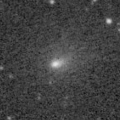
|
It brightened up to 13.3 mag in summer (July 13, Thomas Lehmann). Fading gradually. It stays extremely low in the Northern Hemisphere. In the Southern Hemisphere, it will be getting lower gradually.
Date(TT) R.A. (2000) Decl. Delta r Elong. m1 Best Time(A, h)
Nov. 11 19 20.44 -36 23.6 2.725 2.382 59 17.9 18:24 ( 29, 11)
Nov. 18 19 27.99 -37 20.9 2.893 2.453 54 18.2 18:20 ( 31, 9)
|

|
Tiny member of Comet C/1988 A1 ( Liller )'s group. Now it is 17.4 mag (Nov. 6, Catalina Sky Survey). It will fade out rapidly after this. In the Northern Hemisphere, it will be getting lower gradually. It locates somewhat low in the Southern Hemisphere.
Date(TT) R.A. (2000) Decl. Delta r Elong. m1 Best Time(A, h)
Nov. 11 21 4.86 5 17.6 0.285 1.041 92 17.9 18:24 ( 22, 60)
Nov. 18 20 3.72 16 33.9 0.405 0.973 75 18.4 18:20 ( 66, 56)
|
|
![]()
 C/2021 Y1 ( ATLAS )
C/2021 Y1 ( ATLAS ) (3200) Phaethon
(3200) Phaethon 237P/LINEAR
237P/LINEAR 199P/Shoemaker 4
199P/Shoemaker 4 C/2014 UN271 ( Bernardinelli-Bernstein )
C/2014 UN271 ( Bernardinelli-Bernstein ) C/2022 E3 ( ZTF )
C/2022 E3 ( ZTF ) C/2022 S4 ( Lemmon )
C/2022 S4 ( Lemmon ) C/2022 A3 ( Lemmon-ATLAS )
C/2022 A3 ( Lemmon-ATLAS ) C/2023 S3 ( Lemmon )
C/2023 S3 ( Lemmon ) 117P/Helin-Roman-Alu 1
117P/Helin-Roman-Alu 1 C/2022 V2 ( Lemmon )
C/2022 V2 ( Lemmon ) C/2020 Y2 ( ATLAS )
C/2020 Y2 ( ATLAS ) C/2022 QE78 ( ATLAS )
C/2022 QE78 ( ATLAS ) 207P/NEAT
207P/NEAT C/2021 S4 ( Tsuchinshan )
C/2021 S4 ( Tsuchinshan ) C/2022 N2 ( PanSTARRS )
C/2022 N2 ( PanSTARRS ) C/2019 E3 ( ATLAS )
C/2019 E3 ( ATLAS ) C/2020 S4 ( PanSTARRS )
C/2020 S4 ( PanSTARRS ) C/2022 U3 ( Bok )
C/2022 U3 ( Bok ) 219P/LINEAR
219P/LINEAR 170P/Christensen
170P/Christensen C/2023 C2 ( ATLAS )
C/2023 C2 ( ATLAS ) P/2023 M4 ( ATLAS )
P/2023 M4 ( ATLAS ) C/2022 U1 ( Leonard )
C/2022 U1 ( Leonard ) C/2022 R6 ( PanSTARRS )
C/2022 R6 ( PanSTARRS ) 65P/Gunn
65P/Gunn 13P/Olbers
13P/Olbers 71P/Clark
71P/Clark C/2020 F2 ( ATLAS )
C/2020 F2 ( ATLAS ) P/2001 Q6 ( NEAT )
P/2001 Q6 ( NEAT ) 2019 AV4
2019 AV4 C/2021 A9 ( PanSTARRS )
C/2021 A9 ( PanSTARRS ) 404P/2020 M6 ( Bressi )
404P/2020 M6 ( Bressi ) C/2022 W3 ( Leonard )
C/2022 W3 ( Leonard ) C/2023 V5 ( Leonard )
C/2023 V5 ( Leonard )![]()


























































